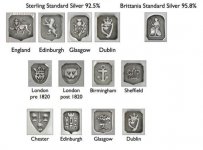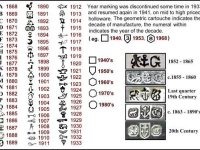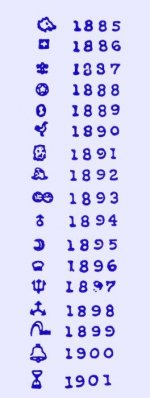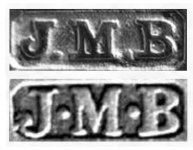Alan Payne
Full Member
- Jan 3, 2018
- 144
- 223
- Detector(s) used
- GTP 1350 Garrett ; Equinox 800
- Primary Interest:
- All Treasure Hunting





The JMB stands for John Millward Banks. Firm established in 1863 in Birmingham with manufacturing premises at 6 Northampton Street, Birmingham and Showroom at 12, 14 Beake Street, Regent Street, London. In 1900 c. the firm name was changed to J.M. Banks & Co. The business was closed in 1926 c.
The anchor means Birmingham:
View attachment 1935658
That particular "A" might be 1908:
View attachment 1935659
OR... that cross-looking thing might mean 1886 (as seen in the above image, plus this one):
View attachment 1935660
That's about all I can tell after 10 minutes on the internet.
